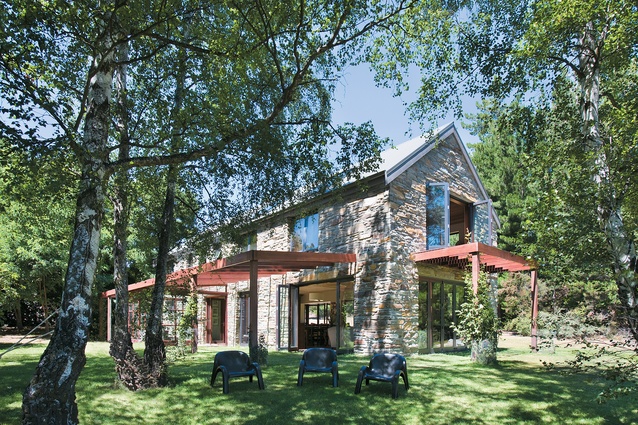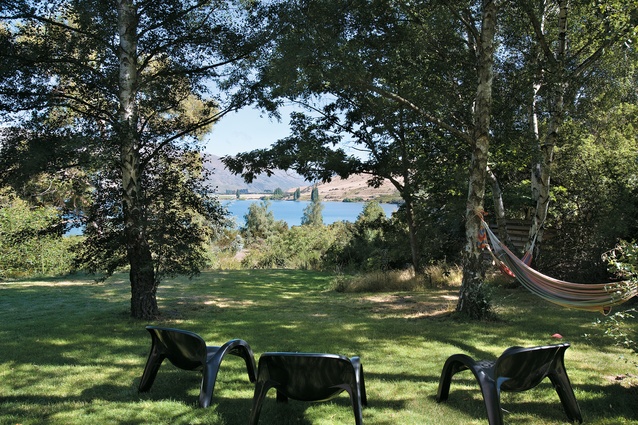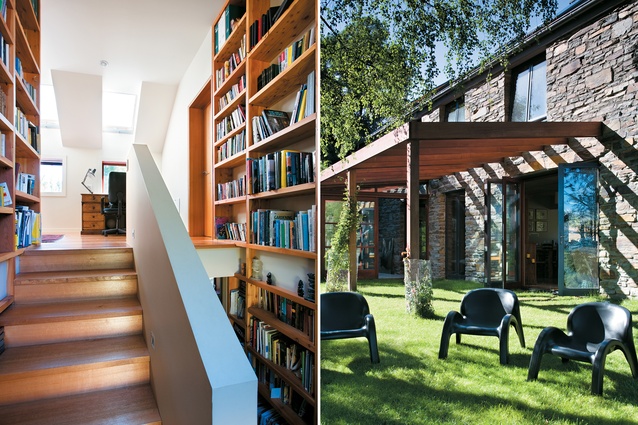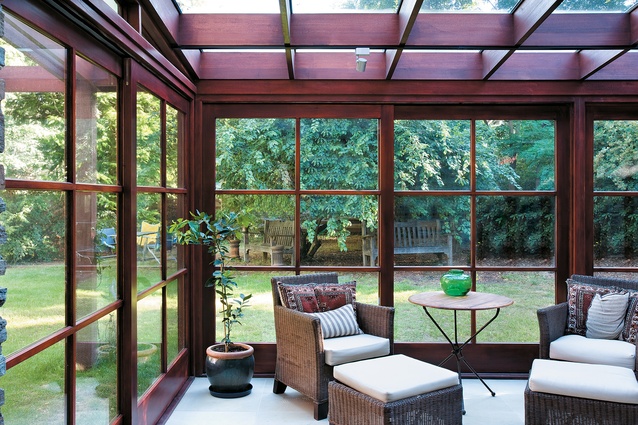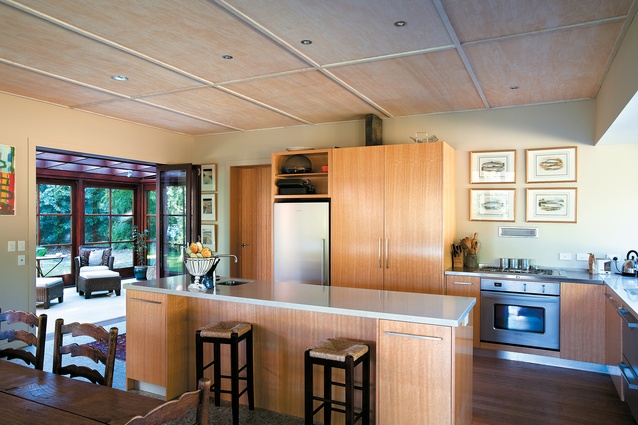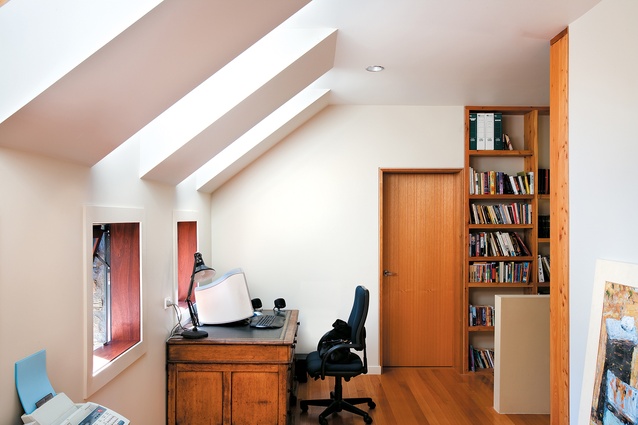Houses Revisited: Sense of place
At her own Wanaka house, first published in 2008, Anne Salmond has turned simple sketched boxes into a comfortable home.
The curse of designing your own home when you are an architect is that there are too many possibilities. It is very easy to spend ages shifting things around, mulling over all the options, waking in the night with yet another idea. The architect’s own house is often a built experiment, a life-sized plaything of concepts – an essay.
All things considered, for Anne Salmond, of Wanaka’s Salmond Architects, the design of her own home was reasonably straightforward, perhaps because it was rather constrained. Applying for Resource Consent for a house to go on the piece of land in Wanaka she had bought with her husband, she sketched out some basic rectangles, thinking that later, when she had more time, she would be able to alter the form and move things around. Five years later, when she got down to design the house, she found that the issued Resource Consent was strictly adhered to; those sketched boxes formed a rigid set of parameters into which the final design had to fit.
As often happens, far from distracting from the design tight constrictions stayed a wandering hand and focused the mind. Anne Salmond’s husband, predominantly, and also her children, acted as the clients while she kept her architect’s hat on, and this intra-familial client-architect approach was also key to corralling the design. What has resulted is a house that keeps to a simple rectangular form, but within has been thoughtfully considered to meet the family’s brief.
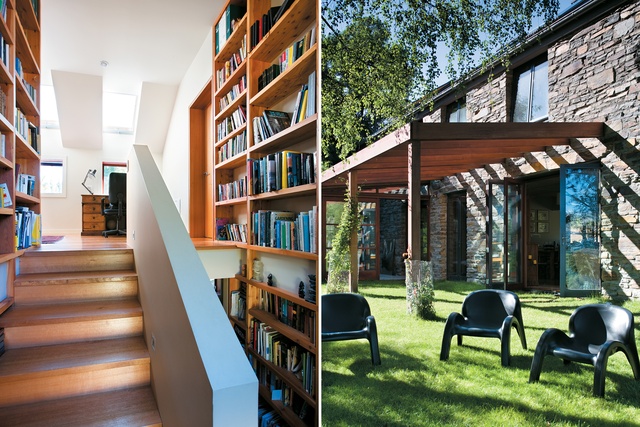
Designing for your husband (and yourself) has benefits. “You do know your client very well,” Salmond says. She explains that often the most difficult part of designing for someone is finding out how they really live. In initial consultations, Salmond often tries to get clients to think of time as a design element. Are they are a morning person or a night owl? Do they eat breakfast standing up at the counter with the paper spread over the bench, or do they prefer to sit in a sunny corner with a cup of tea? These little factors that go make up a ‘lifestyle’ affect the final design – when you have intimate knowledge of the client’s lifestyle, designing becomes far easier.
In building, too, there are always trade-offs between cost and quality, space and detailing. When you’re the client as well as the architect, you have a very clear sense of your personal priorities, which translate as design priorities. On this house, quality was consistently chosen over quantity. High spec, low maintenance, and sustainable materials were chosen over complicated design. There’s a modesty and appropriateness about this house. There is only one living area and no teenage TV room for half the family to disappear into and, with the adult children about to leave home, the number of bedrooms was reduced so that two of the children shared a room for a period. The design approach is not merely pragmatic; it also reflects the values of the clients and fosters a sense of family togetherness.
Salmond’s consideration extends beyond the house and its occupants. The house is designed to fit in with its traditional neighbours; Salmond’s husband also liked the idea of creating something “timeless”. Unlike traditional stone cottages, the Salmond House is heavily punctuated with windows and bifold doors so that the house draws in light and unfolds into the surrounding garden. While the best view, of Lake Wanaka, is to the west, the house opens to the north to admit as much sun as possible.
Orientation, the positioning of the windows, and the use a concrete floor as heat store, all contribute to a naturally warm house. High levels of insulation, and double glazed windows with argon gas, mean that the house traps heat; even in winter, it requires little backup in electricity. The living area opens out to a yard shaded by overhanging deciduous trees and cooled in summer by lake breezes; a cellar has been designed to maintain year-round temperatures of 10-12 degrees.
When the architect (and client) realised the proposed plan couldn’t be pushed out to include a study and library, space had to be found to house a large collection of books and provide space for an office area. The architect achieved this by enlarging the stair landing within which a desk could be placed, and used the stairwell as a library. Bookshelves run either side of the stairs and form structural walls. The traditional arrangement of studs and noggins resembles a bookshelf and this pattern was extruded into deep shelves that hold not only books, but also the roof.
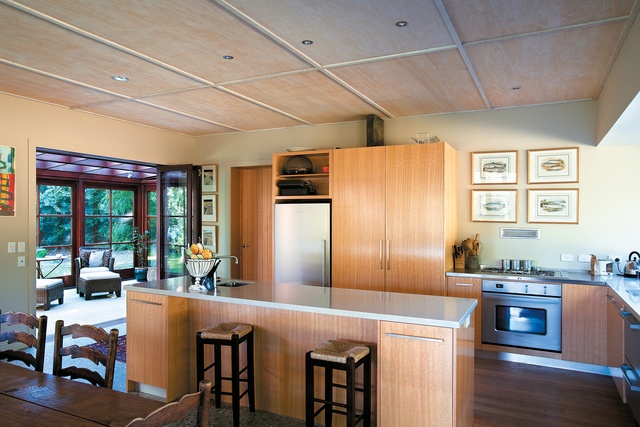
The larch wood is subtly different to the Tasmanian oak used in the flooring and kitchen joinery, which differs again from the rich, dark jarrah used in the window joinery and bathrooms. Using three different types of timber is unusual, but in this house the combination of timbers, in conjunction with the family’s antique furniture, adds to a cosy domestic atmosphere. The generous use of timber is tempered by concrete floors composed of river stone aggregate – material which might be, as Salmond notes, “bog standard” in her part of the world, but would be purposely specified by high-end designers in other places.
There is, in this house, a sense of place, derived from the use of the regional materials, and a sense of the inhabitants, achieved by designing spaces that suit how a family lives now and how it may soon live, with children having left the nest. “A feeling of home,” is how Salmond describes the house’s sense of solidity and shelter.
Indeed, when her son wrote a school essay about the house, he didn’t mention what it looked like, but wrote only about what it felt like: the casual plan that allows sandy feet to scurry unhampered from one end to the other; the windows recessed near half a metre from the face of the solid schist cladding; the security of a well-proportioned bedroom. The elusive quality of atmosphere – hardest to design and hardest to build – is here in bucket loads.
Click here to see more Houses Revisited. And sign up to our email newsletters to receive Houses Revisited straight to your inbox.
Note: An earlier version on this article and Houses Revisited newsletter dated 23 October wrongly attributed this project to Dame Anne Salmond, rather than architect and Fellow of the New Zealand Institute of Architects Anne Salmond.

